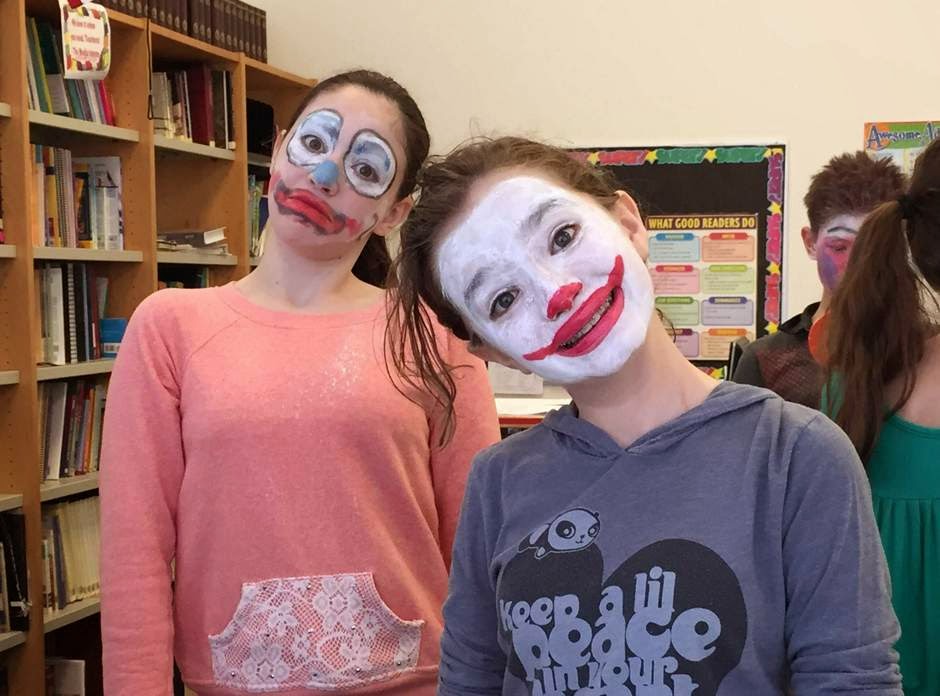About Clowns
by Deirdre Willner-Schreiber, Language Arts Teacher
This year we've been piloting a “flex period” program for our 5th and 6th grade students, serving a number of functions throughout the year. At the beginning of the year, flex period teachers helped students develop strategies for organization and time management as they transitioned into middle school. Following that, flex periods featured puberty education, self-esteem and bullying prevention.
Now, at the end of the year, flex teachers have worked together to design “elective” offerings, where students can discover new interests and develop different skills than they do in their typical classrooms. Elective offerings include: Fantasy Baseball, Bird Watching, Knitting, Martial Arts, Microworlds, and Clowning.
Inspired by my experiences as a
Mitzvah Clown in college, I offered the clowning elective to teach
students the art of being a clown and how to use those talents to bring joy and
gladness to those who need it most. Last week clowning group began to study the art of clowning. Participants were introduced to the clown hierarchy,
decided upon which type of clown they wanted to become, and began to design
their faces on paper.
There are three basic levels in the clown hierarchy:
Whiteface clowns, Auguste clowns, and Character clowns (the Hobo or Tramp clown
is a subset of the Character clown category). The Whiteface clown is at the top of
the clown hierarchy and is characterized as the most clever of the clowns. The
Whiteface clown has a base color of white with no skin color showing and will
typically be dressed in fancier, more traditional clown dress with ruffled
collars, etc.
The Auguste clown sits in the middle of the hierarchy. The Auguste clown tends to be more
foolish and is generally outrageous. This clown has highly exaggerated facial
features over a skin-colored or red base, and wears highly colorful clothing,
big shoes and crazy hairstyles. The Auguste clown is usually the butt of a
trick played by a Whiteface clown. While the Whiteface clown will be
delivering the pie in the face, the Auguste clown will be receiving it.
Character
clowns are at the bottom of the clown hierarchy and can take many different
forms, from firemen to butchers and bakers. The Hobo or Tramp clown is one of
the most well-known Character clowns and became popularized during the Great
Depression as a caricature of a person who was once well off and then fell on
hard times. Consequently, the Hobo or Tramp clown is typically dressed in what
appear to have been nice clothes that have become disheveled and baggy like a
suit with patches and a tie partially undone. The Hobo clown will have a five
o’clock shadow beard painted on with either a happy or sad expression, and
slightly exaggerated eyes and nose, over a skin colored base. This clown is
typically kind-hearted and though he may be the brunt of a joke, he wins over
the sympathies of the audience. He will typically side with either a Whiteface
or Auguste clown during a gag (skit).
As you can see, when all was said and done, our clown group featured the clown hierarchy!








Comments
Post a Comment